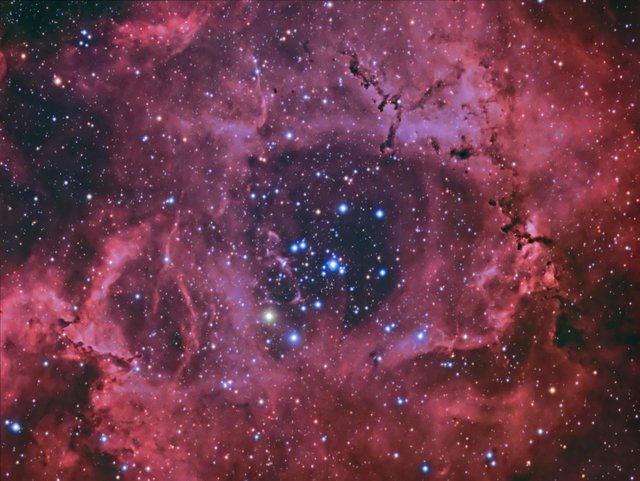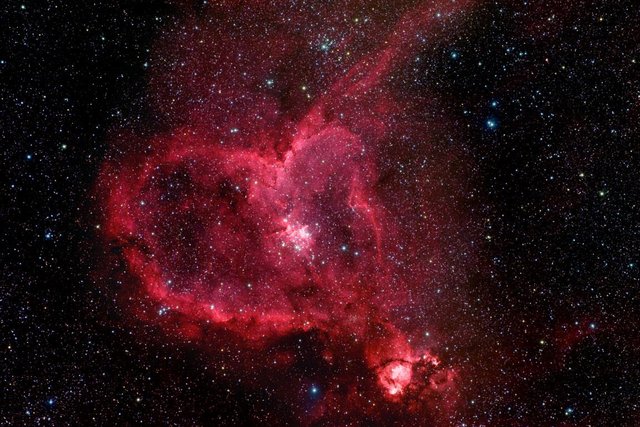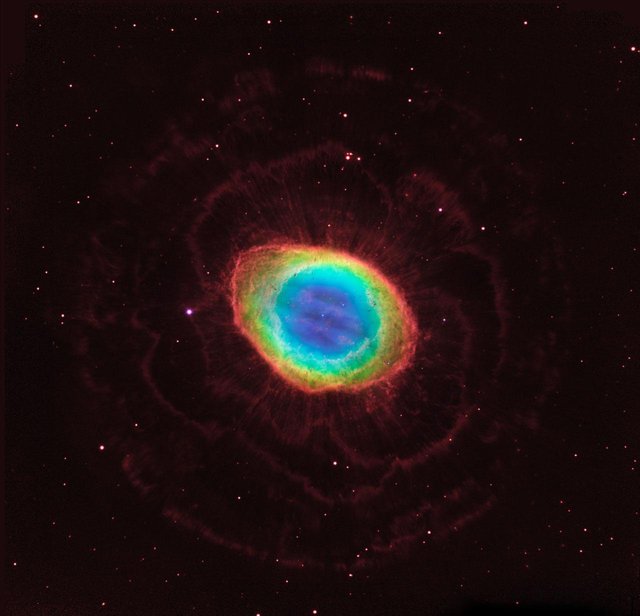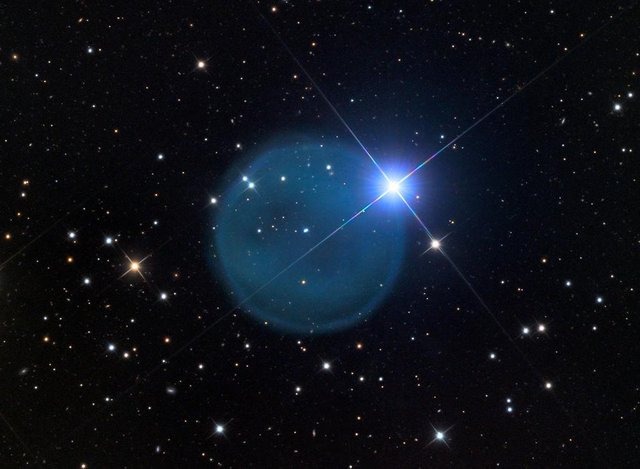ROSES,HEARTS AND COLLIDING STARS: THE BEST ROMANTIC SPACE PICTURES TO SHARE THIS VALENTINE'S DAY
A rose like no other

Forget a bunch of roses—what about 2,500 glowing stars?
The Rosette nebula sits in the Monoceros part of the Milky Way, approximately 5,000 light years from Earth. This large cloud of dust and gas is home to thousands of young stars. It houses some particularly bright and rare blue-white O-type stars, which glow incredibly hot and bright.
The heart of the galaxy

RICK WIGGINS/NASA BLUESHIFT
The Heart Nebula sits in the Perseus arm of the Milky Way, in the Cassiopeia constellation about 7,500 light years away. Its intense red output comes from a few bright—and lots of very dim—stars that sit in an open cluster formation near the center of the nebula. This group is known as Melotte 15.
A ring unfurls into a flower

NASA
If you aren’t a fan of roses, this Hubble Space Telescope image of the Ring Nebula looks more like a peony. Sitting to the north of the Lyra constellation, a shell of charged gas balloons from a red giant star formed this stunning planetary nebula. The peony’s petals are faint outer shells expelled from the star as it ages.
Star-crossed lovers

NASA/FLICKR
Last year, astronomers caught a glimpse of a massive neutron star merger more than 100 million light years away. This collision was so powerful it forged a black hole and sent gravitational waves rippling through space. The merger also sent ripples through the scientific community, who are racing to explain its impact on dark energy theory and our understanding of gamma ray bursts.
Diamonds are a girl's best friend

ADAM BLOCK/MOUNT LEMMON SKYCENTER/UNIVERSITY OF ARIZONA/WIKIMEDIA COMMONS
If you are feeling especially committed this Valentine’s Day, you could send this image of Abell 33 to your sweetheart. Sometimes called the Diamond Ring Nebula, it sits about 2,700 light years from Earth in the constellation Hydra. Bright foreground star HD 83535 gives the nebula its diamond ring effect.
How deep is your love? 13,500 light years, precisely

ADAM BLOCK/MOUNT LEMMON SKYCENTER/UNIVERSITY OF ARIZONA/WIKIMEDIA COMMONS
Abell 33 is not the only “diamond ring” nebula. Located much farther away, Abell 70 lies between 13,500 and 17,500 light years from Earth. This time a galaxy gives the nebula its diamond glow: PMN J2033-0656 beams out from behind Abell 70.
I love pictures like these… pictures in which our perceptions can find many meanings.
Stunning!